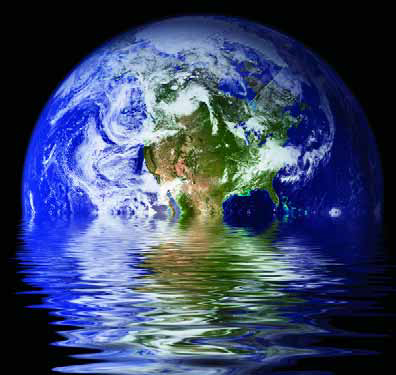ARTICLES
Advance Search
Aquatic Health
Aquatic Health, Fitness & Safety
Around the Internet
Aquatic Culture
Aquatic Technology
Artful Endeavors
Celebrity Corner
Life Aquatic
Must-See Watershapes
People with Cameras
Watershapes in the Headlines
Art/Architectural History
Book & Media Reviews
Commentaries, Interviews & Profiles
Concrete Science
Environment
Fountains
Geotechnical
Join the Dialogue
Landscape, Plants, Hardscape & Decks
Lighter Side
Ripples
Test Your Knowledge
The Aquatic Quiz
Other Waterfeatures (from birdbaths to lakes)
Outdoor Living, Fire Features, Amenities & Lighting
Plants
Ponds, Streams & Waterfalls
Pools & Spas
Professional Watershaping
Structures (Editor's Notes)
Travelogues & History
Water Chemistry
WaterShapes TV
WaterShapes World Blog
Web Links
Around the Internet
Aquatic Culture
Aquatic Technology
Artful Endeavors
Celebrity Corner
Life Aquatic
Must-See Watershapes
People with Cameras
Watershapes in the Headlines
Places just below the earth’s surface have been a resource for heating and cooling basically since the planet took shape. Ever since, all sorts of creatures have taken refuge from excessive heat or extreme cold by burrowing into the soil, and it’s no accident that some of the earliest examples of human self-expression have been found in caves deep below the surface. With pools and spas, however, up until recently there’s always been a legitimate question about whether this timeless heating/cooling approach was workable on any sort of cost-effective basis. If recent projects designed by my firm, Aloha Pools Design Studio (Franklin, Tenn.) are any indication, that question has now been answered with a resounding yes. On the face of it, that answer seems obvious. After all, the U.S. Department of Energy says that geothermal heating is more cost effective than a 95-percent efficient gas heater – and that the same would be true even if 100-percent efficient gas heaters were available. Only recently, however, have the suppliers of these systems reached a point where their equipment is
Have you had just about enough of the current chatter about the environment? Have the terms “global warming,” “carbon footprint” and “sustainable landscape” become more irritating to you than they are inspiring? If so, all I can say is that I don’t think you’ll like the future. Indeed, for those of you who’ve spent the last little while waiting for the Green Revolution to fade away need to set aside any hope that it’s just a fad – just some trumped-up, pop-culture phenomenon that will go away as suddenly as it came to prominence. In fact, the green movement – or whatever you want to call it – is rapidly on its way to
If you spend as much time as I do reading the myriad journals available to the landscape trades, you’ll no doubt have noticed their intense concentration on water quality and preservation. It’s about time these issues came to the fore: We’ve spent so much time as a society focusing on making our lives easier that many of us seem to have forgotten that water is a finite resource. Rest assured: I’m not somebody who believes that environmentalism is all about undermining the desire for beauty or luxury. Nonetheless and now more than ever before, it is apparent that we must find ways to manage, preserve and marshal dwindling water resources while at the same time we must continue to offer our clients spaces in which they can gather to enjoy beauty, tranquility or recreation. The hard fact is, only about three percent of the water on this planet can be
Back in September 2009, I took advantage of my annual trip to the American Society of Landscape Architects’ Expo by stretching things out with a few extra days in Chicago. I’ve always loved the city and was particularly excited by the thought of finally getting a chance to see Millennium Park in person. I’d heard and read a great deal about it, of course, and my interest went way beyond our coverage of
On several occasions through the past few years, I’ve been called on to design several projects that were both extremely small and extremely detailed. I’ve found that working in these intimate spaces is a tremendous challenge, with every single detail taking on tremendous importance and even something as innocuous as
It was no easy task: We were called on to take the majestic landscape defined by the confluence of the Mississippi and Missouri rivers; use it as a template for an urban oasis filled with sculptures, plants and water; and develop a park that would mesh seamlessly with its surrounding urban spaces. Furthermore, they wanted this park to appeal to every conceivable user – people of all ages, needs and backgrounds – while also serving as a catalyst for growth and a profound revival of the city’s core. And not only was the space to carry that symbolic load, but it also had to function efficiently with long-term reliability. We at Hydro Dramatics (St. Louis, Mo.) know from experience that projects of this scope and scale require much planning and coordination to go along with large measures of innovation. We also know that these types of challenges make success that much sweeter. So we jumped into the task with all our energy, supporting the design team charged with developing Citygarden, a 2.9-acre parcel to be filled with
{Multithumb} Ever since people decided to contain and control water for recreational and decorative uses, there have been competing ideas about how to treat it so that it remains safe for human contact. That environment has become even more intense in recent years, as questions and concerns have arisen about the continuing use of traditional chlorine chemistry to get this important job done. Today, for example, we hear a lot about “natural pools” – systems using plant material to absorb the nutrients that feed algae and bacteria. There’s also ozone technology, which needs to be combined with stabilized halogen to treat water effectively. Then there are copper/silver ionization systems and their cousins, the saltwater chlorinators, which have taken root and gained support in many quarters. My career working with alternative sanitizers began a few decades ago. About three years ago, my firm – Fluid Logics of Upland, Calif. – entered this arena with the thought in mind that the watershaping industry needed to take a broader view of the last of those alternatives, digging back through the 100-year history of electrolytic chemical generation and expanding the capacity of these systems to oxidize organic compounds and sanitize the water. For several years before then, I had
We recently completed a project that truly thrilled a pair of well-traveled, highly educated clients: It was a large, complex waterfall-and-pond composition in the sloping backyard of an upscale home in an affluent southern California neighborhood. There were a number of reasons why the project worked so well, but if I had to break it down to one thing more than any other, it had to do with the range of edge treatments we used within the available space. On the side nearest the house, we established a clean lawn-meets-water detail – very disciplined in appearance and obviously man-made. Directly across the pond was a set of rugged waterfalls – much wilder and basically untamed. Bracketing those features, we filled shallow areas with emergent plants and hiding places for fish and frogs. It was a well thought out plan, certainly right for the space. But I know for a fact that






















